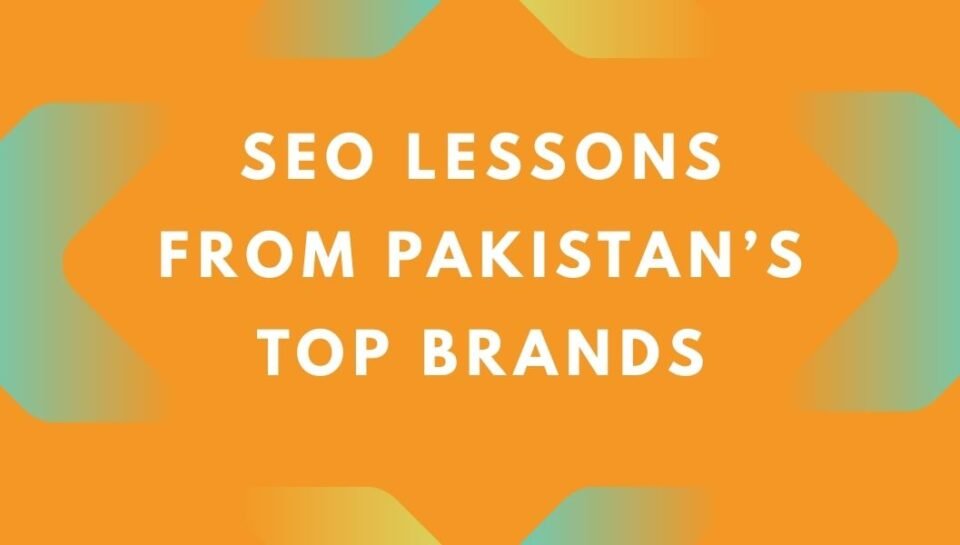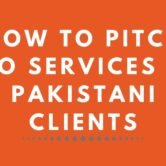
Pakistan’s digital economy has changed dramatically over the last few years. With mobile broadband subscriptions in the hundreds of millions and a majority of users discovering products and services via Google, search engine optimization (SEO) is now a primary growth lever—not a side project. From e‑commerce leaders and real estate portals to telcos, banks, and fashion retailers, Pakistan’s top brands are writing the SEO playbook in real time. This guide distills practical lessons from those brands, so marketing and growth teams can accelerate organic traffic, leads, and revenue.
Why SEO Matters in Pakistan Right Now
Search behavior in Pakistan is intensely mobile, price-sensitive, and seasonal. Users compare, review, and search in English, Urdu, and Roman Urdu, often mixing languages in a single query. That complexity makes SEO both challenging and high-leverage. A few dynamics shaping the opportunity:
- High mobile usage: Publicly reported industry figures indicate 100M+ mobile broadband subscriptions, making mobile-first SEO non-negotiable.
- Marketplace dominance: Aggregators like Daraz, PakWheels, and Zameen.com set SERP expectations for speed, content depth, and structured data.
- Seasonality: Ramadan, Eid, wedding season, and year-end sales create massive spikes in branded and non-branded search demand.
- Trust and convenience: Users prefer clear pricing, COD or secure payment options, and fast delivery/branch access—elements that must be reflected in content and schema markup.
- Budget efficiency: SEO compounds. In a volatile ad market, stable organic acquisition reduces CAC and improves margins over time.
What Pakistan’s Top Brands Do Right
1) Own Your Brand SERP
Leaders make sure that when someone searches their brand, the entire first page is accurate, helpful, and conversion-ready.
- Optimize the homepage, About, Careers, Contact, and key product/category pages with clear titles, meta descriptions, and descriptive H1s.
- Add Organization, Website, and Breadcrumb schema to enable rich sitelinks and stronger brand panels.
- Publish a press/media page and active profiles on YouTube, LinkedIn, and local directories to occupy branded real estate.
- Create a support/FAQ hub to reduce brand-negative queries (e.g., “complaints”, “returns”) by answering them directly.
2) Build Topical Authority like Zameen.com and PakWheels
Marketplaces dominate by owning topics, not just keywords. Zameen.com’s locality pages and PakWheels’ car price pages earn authority because they answer complete user intents.
- Map topic clusters: e.g., “Real estate in Lahore” → city → locality → street → project → FAQ → price trends → how-to guides.
- Interlink hubs and spokes so users and crawlers find related assets fast; use descriptive anchors, not just “read more”.
- Publish evergreen + refreshed content: guides, comparisons, price updates, and explainer videos.
- Leverage UGC (where applicable) for depth: forums, Q&A, and reviews add long-tail coverage and freshness.
3) Make Technical SEO a Habit, Not a Project
Top brands treat technical SEO as ongoing quality assurance. This pays off in crawl efficiency, index coverage, and page experience.
- Core Web Vitals: Target LCP < 2.5s, CLS < 0.1, and Interaction to Next Paint thresholds; optimize images, fonts, and JS.
- Mobile-first: Test on low-to-mid range Android devices; audit interactivity, tap targets, and viewport behavior.
- Faceted navigation: Use canonical tags, noindex for non-valuable combinations, and parameter rules to protect crawl budget.
- Clean sitemaps and robots: Submit XML sitemaps by type (products, categories, blog), keep robots.txt precise, and remove orphan pages.
- Log-file and GSC monitoring: Diagnose crawl patterns, soft 404s, and spikes in server errors before rankings drop.
4) Scale E‑commerce SEO the Smart Way
Fashion and retail brands (e.g., Khaadi, Gul Ahmed, Sapphire) win by making category pages the star and product pages conversion workhorses.
- Category pages: Target non-branded intent like “lawn collection 2025”, “women’s winter shawls”, “men’s kurta price in Pakistan”. Include filters, FAQs, size/fit guides, and internal links.
- Products: Implement Product schema with price, availability, and review ratings; use unique descriptions, alt text, and image SEO.
- Seasonal evergreen: Keep URLs stable (e.g., /lawn-collection/) and roll content forward each season to retain link equity.
- Marketplace mix: Balance Daraz exposure with D2C SEO so your site ranks for brand + product terms and captures higher-margin traffic.
5) Local SEO at Enterprise Scale
Telcos (Jazz, Zong, Telenor), banks (HBL, Meezan, UBL), and retail chains benefit from rigorous branch/location optimization.
- Google Business Profile: Maintain accurate NAP, hours, Urdu-English names, and categories; use UTM tags; post offers and updates.
- Store locator: Build SEO-friendly location pages with embedded maps, schema (LocalBusiness), parking/ATM features, and FAQs.
- Review ops: Prompt, respond, and learn from reviews; escalate recurring issues to reduce negative sentiment on SERPs.
6) Serve Content in English, Urdu, and Roman Urdu
Searchers often use transliteration: “Jazz call packages”, “internet packages Zong”, “best kurta price Pakistan”, “Roman Urdu recipes”.
- Keyword research across languages: Analyze English, Urdu, and Roman Urdu variants; cluster by intent (buy, compare, troubleshoot).
- Hreflang and language UX: Offer language toggles; avoid auto-translation without review; localize examples and screenshots.
- Voice search: Include natural language FAQs and concise answers to capture featured snippets and voice results.
7) Use Structured Data to Win SERP Features
Schema markup helps your listings stand out and improves click-through rate (CTR).
- Product, Review, and Offer for retail; FAQ and HowTo for help content; VideoObject for YouTube embeds; Organization for brand trust.
- Banks and telcos: Use FAQ schema for fees, limits, packages, and step-by-step activation guides.
- Breadcrumb schema: Cleaner SERP paths and better internal linking clarity.
8) Earn Links the PR-First Way
Leading brands secure authoritative backlinks via newsworthy assets and community involvement.
- Data stories: Publish unique insights (e.g., car price trends, property yields, seasonal shopping behavior) for coverage in local media.
- Guides and tools: EMI calculators, package comparators, size guides, and checklists naturally attract citations.
- University and community partnerships: Scholarships, events, and CSR initiatives create legitimate link opportunities.
9) Turn Campaign Peaks into Organic Compounding
TV spots and influencer bursts trigger spikes in branded search. The best teams convert those into lasting rankings.
- Pre-launch SEO: Publish campaign landing pages early, interlink them, and request indexing before media breaks.
- Evergreen URLs: Keep the same slug for recurring events (e.g., /eid-sale/), archive highlights, and update content annually.
- Social-SEO sync: Ensure creators use consistent names/hashtags that match your page titles and schema.
10) Measure What Matters
Organic growth is only as good as its attribution and conversion tracking.
- GA4 + GSC: Track assisted conversions, landing page performance, query clusters, and SERP features.
- Conversion rate optimization (CRO): A/B test titles, layouts, and copy; reduce friction on PDPs and lead forms.
- SEO QA: Monitor 404s, redirects, feed health (for shopping), and site changes via release checklists.
As a Pakistan-based SEO agency, NB Disruptors brings these practices together—technical rigor, content strategy, and analytics—to help brands replicate what works and avoid what doesn’t.
Mini Case Snapshots (Public Observations)
Daraz: Seasonal + Structured Scale
- Strong category taxonomy and seasonal hubs (e.g., 11.11, Eid, Back to School) with internal links from homepage, apps, and emails.
- Product schema and fast image delivery support Core Web Vitals and rich listings.
- Lesson: Build reusable seasonal frameworks and canonical rules to prevent duplicate content across campaigns.
Zameen.com: Locality Depth and Topical Authority
- City → locality → project page hierarchy, consistently interlinked with market insights and FAQs.
- Structured data and on-page elements (H1s, breadcrumb trails) clarify context for both users and crawlers.
- Lesson: Own the full journey—from discovery to decision—on one domain to dominate long-tail search.
PakWheels: UGC + Utility
- Forums, reviews, and price pages deliver fresh, user-generated content that matches diverse search intents.
- Buyer guides and comparisons rank well due to depth, recency, and internal linking.
- Lesson: When users contribute quality content, your long-tail footprint grows exponentially.
Fashion Retailers (Khaadi, Gul Ahmed, Sapphire): Category-Led Growth
- Non-branded category terms (e.g., “lawn 2025”, “winter sale Pakistan”) capture discovery-stage traffic.
- Reused seasonal URLs accumulate authority; structured FAQs and size guides address objections.
- Lesson: Treat category pages like editorial destinations, not just product grids.
Telcos (Jazz, Zong, Telenor): Package Pages as Living Documents
- Regularly updated “call/internet/SMS packages” pages match how users search and compare.
- Tables, FAQs, and step-by-step activation HowTos improve snippet eligibility and UX.
- Lesson: Update velocity and clarity win against thin, outdated lists.
Banks (HBL, Meezan, UBL): Trust, Clarity, and Local SEO
- Clear credit card and account pages with fees, eligibility, and FAQs; branch locators optimized for geo searches.
- Security and compliance content builds E‑E‑A‑T and reduces friction.
- Lesson: Transparent product pages plus branch-level SEO drive both online and offline conversions.
A Practical 90‑Day SEO Plan Inspired by Market Leaders
Days 1–30: Foundations and Quick Wins
- Audit technical health: CWV, indexing, canonicalization, redirects, sitemaps, robots.txt, and JavaScript rendering.
- Keyword clustering: English, Urdu, Roman Urdu across core categories; define hub-and-spoke architecture.
- On-page hygiene: Fix titles, metas, H1s; add internal links; implement Breadcrumb and Organization schema.
- Brand SERP: Update About/Contact/FAQ; claim and polish social profiles; add media/press page.
Days 31–60: Scale Content and Schema
- Publish 3–5 pillar hubs and 20–40 supporting articles or category enhancements with FAQs and comparison tables.
- Implement Product/FAQ/HowTo schema where relevant; add VideoObject for key pages with embedded videos.
- Local SEO: Optimize Google Business Profiles; build store/branch pages with LocalBusiness markup.
Days 61–90: Authority and Conversion
- Digital PR: Launch one data-led story (e.g., price or trend report) targeting local publishers.
- CRO sprints: A/B test PDP copy, CTAs, and category page intro blocks; improve form UX and trust signals.
- Automation: Set alerts for CWV regressions, 404s, and index drops; operationalize release checklists.
Common Pitfalls to Avoid
- Thin or duplicated category content, especially across seasonal collections.
- Parameter “explosions” from filters creating crawlable duplicates without canonical/noindex rules.
- Ignoring Urdu/Roman Urdu variations in keyword research and content planning.
- Relying only on marketplaces while neglecting your own brand and category rankings.
- Overusing FAQs schema on every page (risking rich result loss); apply schema where it adds user value.
- Letting Core Web Vitals degrade after design changes or heavy script additions.
- Unclear E‑E‑A‑T signals: lack of author bios, sourcing, or dated content on YMYL topics (finance, health).
SEO Keywords and Semantics to Weave Into Your Strategy
Use relevant keywords naturally and in clusters. Examples for Pakistan-focused search engine optimization:
- Core: SEO Pakistan, SEO agency in Pakistan, search engine optimization, technical SEO, on-page SEO, keyword research, link building, Core Web Vitals, mobile-first indexing.
- E‑commerce: e‑commerce SEO Pakistan, product schema, PDP, category optimization, faceted navigation, canonical tags, page speed, Shopify/WordPress.
- Local: local SEO Pakistan, Google Business Profile, store locator, NAP, map pack, near me searches.
- Content/E‑E‑A‑T: content marketing, buying guides, comparisons, Urdu content, Roman Urdu, FAQs, expert reviews, schema markup.
- Analytics/CRO: GA4, Search Console, CTR, bounce rate, conversion rate optimization, A/B testing, attribution.
Conclusion: Build for the Market You Serve
The biggest SEO lesson from Pakistan’s top brands is simple: meet users where they are. That means fast mobile performance on real devices, content in English/Urdu/Roman Urdu that genuinely solves problems, category pages designed to convert, structured data for richer SERPs, and local SEO that connects online intent with offline action.
Whether you’re a marketplace, bank, telco, or fashion retailer, the path to sustainable organic growth is the same: consistent technical hygiene, topical authority built through helpful content, and measurement that ties rankings to business outcomes. Start with your foundations, plan for seasonality, and then compound your wins through PR-worthy assets and continuous optimization. The brands that do this well don’t just win traffic—they win market share.




